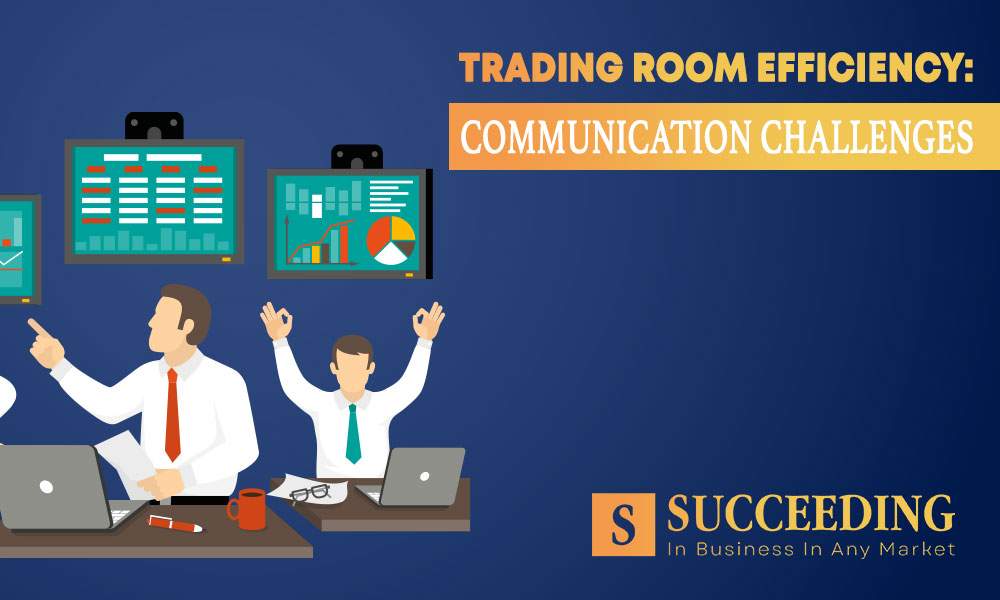In the intricate dance of financial markets, where every second counts, the efficiency of communication within trading rooms emerges as a linchpin for success. The ability to seamlessly exchange information, make split-second decisions, and navigate the ever-changing landscape of market dynamics is paramount. This article embarks on a comprehensive exploration of the challenges inherent in trading room communication, delving into the nuances, technological solutions, human factors, regulatory considerations, and future trends that shape the efficiency narrative within these high-stakes environments.
The Dynamics of Trading Rooms
Trading rooms, the nerve centers of financial institutions, serve as hubs where traders, analysts, and decision-makers converge to interpret, strategize, and execute trades. In these environments, characterized by real-time data feeds and constant market flux, efficient communication is not a mere convenience but a fundamental necessity for effective collaboration and successful trading outcomes. The dynamics of trading rooms demand a communication infrastructure that can keep pace with the rapid rhythm of financial markets.
Communication Challenges in Trading Rooms
Despite the paramount importance of communication in trading rooms, challenges abound. The onslaught of information, often referred to as information overload, can overwhelm traders, impeding their ability to discern critical data from noise. Real-time communication is indispensable, yet breakdowns in communication channels, be they technological glitches or human errors, can lead to delays, missed opportunities, and, in extreme cases, financial losses. Addressing these challenges head-on is essential for maintaining the efficiency of trading operations.
Technology and Trading Communication
Technology emerges as a formidable ally in the battle against communication challenges within trading rooms. Instant messaging platforms, collaboration tools, and dedicated trading systems have revolutionized how information is exchanged. These technological advancements not only enhance the speed of communication but also contribute to the overall efficiency of trading operations. The section explores how technology acts as a catalyst for streamlined communication, providing a foundation for effective decision-making in the fast-paced world of financial markets.
Human Factors in Trading Communication
Beyond the realm of technology, human factors exert a significant influence on communication within trading rooms. Stress, multitasking, and the high-pressure nature of trading environments can impact the clarity and effectiveness of communication. Understanding the psychological aspects of traders and creating an environment that supports effective communication become critical components of tackling communication challenges. Human-centric strategies, such as mindfulness practices and stress management initiatives, can contribute to a more resilient and communicative trading team.
Regulatory Considerations in Trading Communication
The financial industry operates within a tightly regulated framework, and communication within trading rooms is no exception. Regulatory bodies impose stringent standards to ensure transparency, security, and compliance. This section delves into the intricate landscape of regulatory considerations, discussing the challenges organizations face in adhering to standards while maintaining efficient communication. Secure communication channels, encryption protocols, and robust compliance frameworks are explored as integral elements of navigating the regulatory landscape without compromising efficiency.
Best Practices for Enhancing Communication Efficiency
Overcoming communication challenges within trading rooms requires the adoption of best practices. Clear communication protocols, comprehensive training programs, and regular communication audits contribute to an environment where information flows seamlessly. Case studies of successful implementations provide insights into how organizations have overcome communication challenges and established efficient communication practices within their trading rooms. Emphasizing the importance of adaptability and continuous improvement, this section serves as a practical guide for financial institutions seeking to enhance communication efficiency.
Future Trends in Trading Room Communication
The future of trading room communication is shaped by emerging technologies and evolving market dynamics. Artificial intelligence, blockchain, and other innovations are poised to revolutionize how information is exchanged and processed within trading rooms. This section explores the potential impact of these trends, discussing how financial institutions can prepare for the communication dynamics of tomorrow. As the financial landscape continues to evolve, staying ahead of technological trends and embracing innovative solutions becomes paramount for maintaining communication efficiency.

Conclusion:
In conclusion, the efficiency of communication within trading rooms is not a mere operational detail; it is the heartbeat of successful trading operations. The challenges presented by information overload, technological nuances, human factors, regulatory demands, and the evolving landscape of financial markets are not obstacles but opportunities for growth and innovation. By embracing technological advancements, implementing best practices, understanding human dynamics, navigating regulatory landscapes, and anticipating future trends, financial institutions can foster a trading room environment where communication is not just efficient but a strategic advantage.
FAQs:
Q1: Why is efficient communication crucial in trading rooms?
A1: Efficient communication in trading rooms is crucial because it enables quick decision-making and facilitates the rapid exchange of information in a dynamic market environment. It is essential for navigating the complexities of financial markets and seizing opportunities.
Q2: How do technological advancements contribute to communication efficiency in trading rooms?
A2: Technological advancements, such as instant messaging platforms and collaboration tools, enhance communication speed and overall efficiency in trading rooms. These tools facilitate real-time information exchange and contribute to streamlined trading operations.
Q3: What are the common human factors that impact communication in trading rooms?
A3: Human factors such as stress, multitasking, and high-pressure situations can impact the clarity and effectiveness of communication in trading rooms. Understanding these factors is crucial for creating an environment that supports efficient communication.
Q4: How do regulatory considerations affect communication in trading rooms?
A4: Regulatory considerations impose standards to ensure transparency, security, and compliance in trading rooms. Organizations must navigate these regulations while maintaining efficient communication, often requiring secure communication channels and robust compliance protocols.




